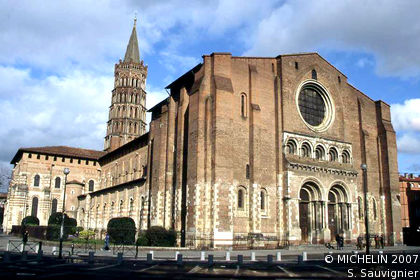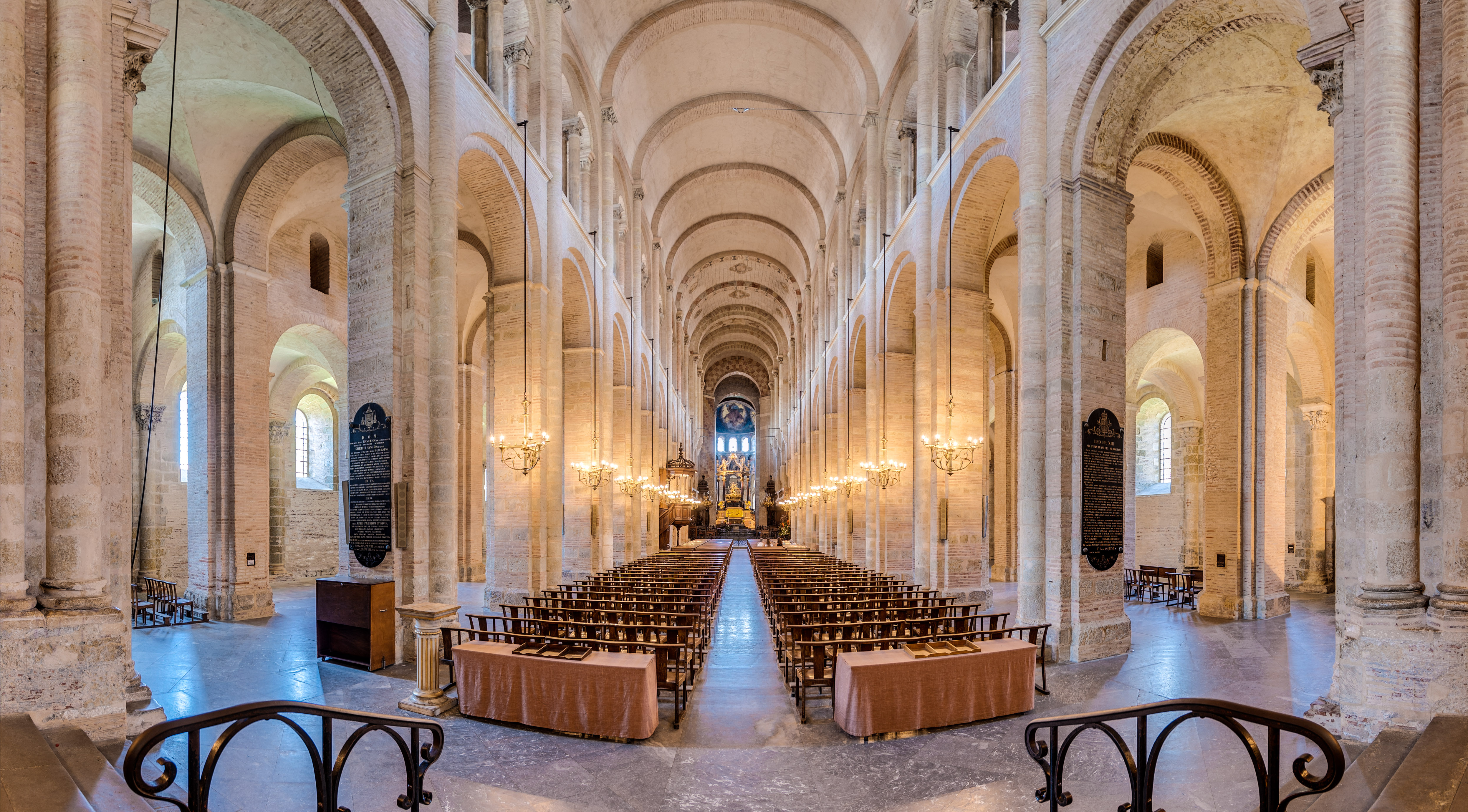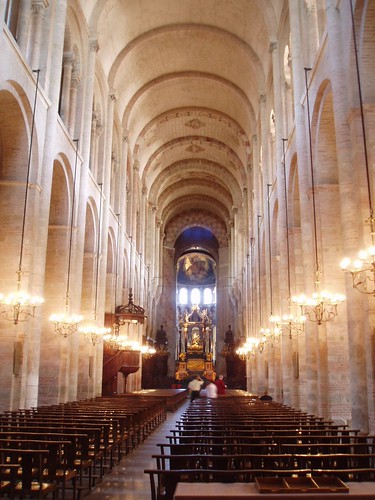Basilica of St. Sernin, Toulouse
The Basilica of Saint- Sernin is a landmark of Toulouse. The construction does not match the type of a basilica, but the one Empor hall. The pilgrimage church was built over the grave of St. Saturninus, Bishop of Toulouse, the 250 has a martyred ( Sernin is a verschliffe form to Saint- Saturnin ). It is part of the French pilgrimage route from Arles to Santiago de Compostela and heard in this context, since 1998 a UNESCO World Heritage Site.
Architecture
How many buildings in Toulouse, the ville rose, she too was built of red stones. It has an octagonal bell tower with a carillon.
The construction period is 1077-1119 ( altar consecration in 1096 ). Saint- Sernin is the largest surviving Romanesque church in France. The size of the church is due to its function as a pilgrim church. The total length is 115 m, the transept depth 64 m, the height of the nave 21,10 m, the width of the nave 32,50 m. Together with the Sainte -Foy of Conques Saint- Sernin is one of the top performances of the Romanesque Languedoc.
The five-aisled, zwölfjochige nave has galleries with their own exposure, but no clerestory windows, making the tunnel vault in the nave hardly gets light. The nave was built after 1118. From each pillar rises to the transverse arches of the barrel on a service. The weitausladende three-aisled transept has eastern apses. About the transept rises an octagonal dome above squinches, the reconciliation of the square to the octagon. The choir has a handle and five radiating chapels, the axial chapel is extended. The richly developed outer outline of the choir differentiates the model of the Cathedral of Nevers.
The whole building was probably completed around the middle of the 12th century. With its dimensions Saint- Sernin was one of the biggest and greatest artistic works of Romanesque architecture.
The crossing piers were subsequently amplified with the increase of the tower in the middle of the 13th century. The west façade was only completed in 1929.
1838, the church was placed as a monument historique under protection, " restored " from 1845 by Viollet -le- Duc ( 1814-1879 ). Viollet not preserved the former status, but realized his ideal of a harmoniously proportioned Romanesque sacral building " with Greco-Roman influences " - a view that provoked opposition from conservationists today. Viollet formulated his restoration principle as follows: " A monument to be restored does not mean to entertain it, to repair or renew, but to bring about the perfect state, which has perhaps never existed "
The Commission for Historical Monuments had entrusted him in 1845 with the renovation of Saint- Sernin. Viollet had the simple gabled roofs over longitudinal and transverse ship replaced by a stepped canopy, adorned the massive brick walls with friezes and the west facade - but only on paper - added two square towers ( art 5 /90).
Interior
The interior is home to over 260 plastic plants.
- The main altar of Bernardus Gelduinus originated before 1096. The richly carved white marble dining hall is the size of 2.23 x 1.34 m. With Gelduinus actually begins the monumental sculpture of the high Romanesque.
- In the ambulatory are 7 marble reliefs from the late 11th century to see: the Majestas domini, four angels and two apostles. This is the first large-dimension figure sculpture of the Romanesque. Characteristic is the strictly frontal pose, the heads are partly given in the profile. As models were Gallo- Roman grave stelae.
- Also worth mentioning is the Kapitellplastik of the late 11th and early 12th century.
- Of particular importance is the portico on the south aisle, the Porte Miègeville from around 1118 The tympanum shows the Ascension of Christ, accompanied by four angels.; the lintel shows the Upward apostles; laterally above the fighters zone are Peter, and James. In the overall architectural structure as in the sculptural style of this portal is closely related to the Puerta de las Platerias in Santiago de Compostela ( pilgrimage route ).
Organ
Furthermore, this church has one of the most important organs of the organ builder Aristide Cavaillé -Coll, which was built in 1888. disposition:










